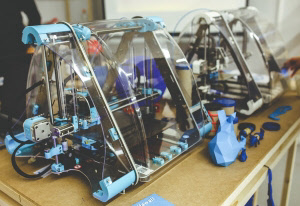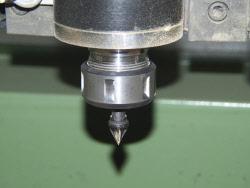CNC Machining vs. 3D Printing

Find Which Modern Manufacturing Method is Best for Your Work
CNC machining has been the reigning champion of manufacturing. 3D printing, a new contender, has raised a lot of questions. How does it work? And how does it compare to traditional CNC machining?
What is 3D Printing?
3D printing is a type of additive manufacturing considered either very scary or very exciting, depending on your perspective. Manufacturers comfortable in their traditional business model cast a leery eye at 3D printing, and amateur and small-time innovators dream of the endless possibilities. It is a revolutionary technology making replication of tools and other practical items possible in your own home. The potential for innovation has no ceiling.
How 3D Printers Work
3D printers print layers of renewable bioplastics (or many other types of materials) into a full physical object. 3D printing works by downloading a file of a 3D model, pushing a button, and watching a printer build a physical representation of the design on your computer screen. The printer is fed by a plastic, sometimes as a string on a spool. The plastic is melted and applied into a layer of the object, instantly cooling to hold to form.
Of course, it isn’t magic. On the user end, it’s a push of a button. Ease of use is one of its main attractions. 3D printers work in several different ways depending on the model you’re using. The industry is evolving so quickly, production processes are in constant flux.
What is CNC Machining?
CNC machining can be described as a type of subtractive computer numerically controlled (CNC) manufacturing, in that materials are removed in order to make metal parts such as bushings, valves, wear parts and bearings. CNC machines include lathes, routers, grinders and mills.
CNC machining works similarly to 3D printing in that a CAD drawing is created in a computer program, the program is loaded into the CNC machine and an operator runs the program to perform the cutting, milling, grinding or finishing processes.

3D Printing vs. CNC Machining: Additive vs. Subtractive Manufacturing
3D printing is a type of additive manufacturing, and CNC milling is subtractive. 3D printing adds materials, and CNC milling removes them. Depending on the product you’re looking to create, each presents its own advantage.
Adding materials may be more cost- efficient when producing very complex designs such as artwork or very intricate tools and accessories. Removing materials via CNC machining makes more sense for objects made from very dense or heavy materials and have simple formations. If a handful of cuts is all it takes to get a part or component to specification, CNC milling is preferable.
Material Selection: CNC Does More
CNC machines still have the upper hand in terms of material versatility. Most 3D printers are designed for one or a few different materials, while CNC mills can accommodate more materials on a single machine, a big-time cost saver.
CNC Machining is Faster than 3D Printing
In general, CNC milling removes material faster than 3D printers can add it. 3D printing in its current state is desirable for unique, highly specialized parts produced in small quantities. Producing long runs of 3D printed items can be time-consuming and expensive. CNC milling still has the upper hand.
The bottom line: 3D printing is still a largely unexplored industry. CNC machining is far more progressed in its evolution. 3D printing presents many exciting opportunities, but with so much unknown, CNC machining is still needed for a huge variety of production applications.
Future of Industrial 3D Printing
Much is unknown about the future of 3D printing. All we can say is there’s tremendous potential. 3D printers are becoming household items, and could completely change the landscape of manufacturing should the technology prove accessible and cost-efficient.
Regulation will likely play a crucial role in its development. Many practical household items are not protected by copyright law and are subject to replication via 3D printers. How will traditional manufacturers adjust to the new industrial and commercial landscape when customers can make their own products at the press of a button?
Tri Star FANUC Repair Experts Provide CNC Machining Services
3D printers face another uncertainty: repairs. Right now there are a lot of different brands of printers without standardized parts. Getting a broken printer fixed can take a lot of time. And troubleshooting can get expensive if you have to print a sample each time. CNC machines, however, are primarily made from FANUC components and have a set of known alarm codes. As the manufacturing industry continues to evolve, trust in Tri Star CNC Services to be your source for CNC machining repairs nationwide.